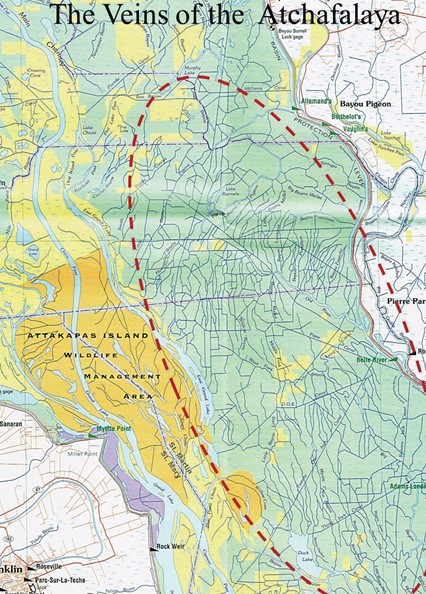Within Eyesight
According to Cajun historians, Cajuns developed customs to bring themselves together in order to survive after “The Great Upheaval. Cajun society consisted of closely knits family members and certain neighbors who depended on each other socially and economically. This cooperation is one of the factors that has helped Cajuns to maintain the old country culture. Cajun family relations were important to all family members. Not only Cajun fathers and mothers, but grandfather and grandmothers, aunts and uncles, God parents all help in raising children. Godfathering and godmothering were and for that fact are still very important in Cajun family life. Youth usually refer to their godparents as parrain and marraine, and consider them family even if they may not be blood related.
Another way this ‘Closely Knit’ culture manifest itself, is to live within eyesight of each other. At Bayou Pigeon it was quite common for the grown children / siblings to all live within “eyesight” of the patriarch and matriarch.
This custom led to the development small groups or clusters of families in the physical landscape. This may not have been evident to the casual observer, but it was clearly evident to anyone who has spent some amount time at Old Bayou Pigeon. It is still somewhat evident at Bayou Pigeon, today.
Let's take a look at some Bayou Pigeon history.
The Michel families, a founding family of Bayou Pigeon, lived around the confluence of Little Bayou Pigeon on the west side of Grand river. The Berthelot’s lived on the east side of the Grand River at the confluence, ie., the property of Anatole Berthelot. The Vaughn's’ lived to the west of the Michel's’ on both sides of Little Bayou Pigeon. One group of Landry’s lived south of the Michel's, Then another group of Berthelot’s & Templet’s, The Blanchard's, Solars and Daigle's lived around Indigo Bayou, and so on.
In God We Trust all others show corroborating data ! A careful review / study of 1920 U.S. Census data, and family genealogy data in the book demonstrates how this phenom came to past at Bayou Pigeon.
Check out the following sketch of Michel's and Berthelot's we put together to validate this claim.
Nestor
Michel and Clementine are in dwelling #435; Joseph Michel (Nestor & Melanie
Michel’s 1st child) & his wife, Loides, and their four children live in
dwelling #432; Aurelie Lucien Michel [son of Savin Michel and Anastasie
Broussard] and his wife Winona in dwelling #433; Justilien Michel II (Nestor
& Clementine Michel’s 1st child) and wife Joan in dwelling #436; Oliver
Michel (Nestor & Melanie Michel’s third child) and his wife Mary in
dwelling #437; Serphin Tourera, husband of Azela Euphemie Michel (Nestor &
Melanie Michel’s 2nd child), dwelling #438; Savin Michel, 68 years old, living
alone in dwelling 439; Sidney Vaughn, husband of Agnes Michel Vaughn (Nestor
& Clementine Michel’s 4th child) living in dwelling #440 ; Aldoris Vaughn,
husband of Eurami (T-Ran) Michel Vaughn [Nestor and Clementine Michel’s 2nd
child], dwelling #441; Joseph Vaughn, husband of Ilda Michel Vaughn, (Nestor
& Clementine Michel’s 6th child) dwelling #442; Evans Oliver, husband of
Ida Michel Oliver [Nestor & Clementine Michel’s 8th child], dwelling #443.
We did not have the time nor the space to put this type documentation together in the book, But here it is in our blog for all to understand. Please share with those have an interest ... Preserve the Heritage... Any additional info do not hesitate to comment.


























